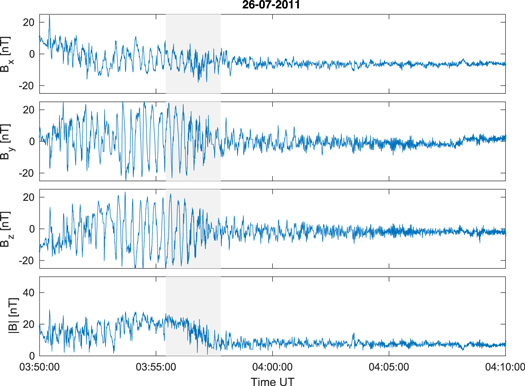The aim of this study is to compare observations of the magnetic field structure of observed quasi-parallel collisionless shock fronts with the results obtained analytically. A two-fluid analytic model of the shock front structure was derived under the assumptions that the shock is stationary and planar. The ion and electron kinetic pressures were assumed to be scalar, and polytropic state equations were used. The results of this analytical approach show that the shock magnetic field has an oscillatory structure. Venus Express (VEX) observations of the Venusian bow shock have been used to validate these theoretical findings. The Venusian bow shock and corresponding foreshock are significantly smaller than those of Earth. Thus, observations of the underlying structure of the quasi-parallel shock at Venus are not masked by the presence of high-amplitude waves and nonlinear structures originating in the foreshock. It is shown that the structure of the shock front, as observed by VEX, has a very strong similarity to the structure obtained analytically.

Full Article:
Balikhin, M. A., Gedalin, M. (SHARP), Walker, S. N., Agapitov, O. V., Zhang, T. (2023). Structure of a quasi-parallel shock front. The Astrophysical Journal, 959, doi: 10.3847/1538-4357/ad0b7
License: CC BY 4.0





